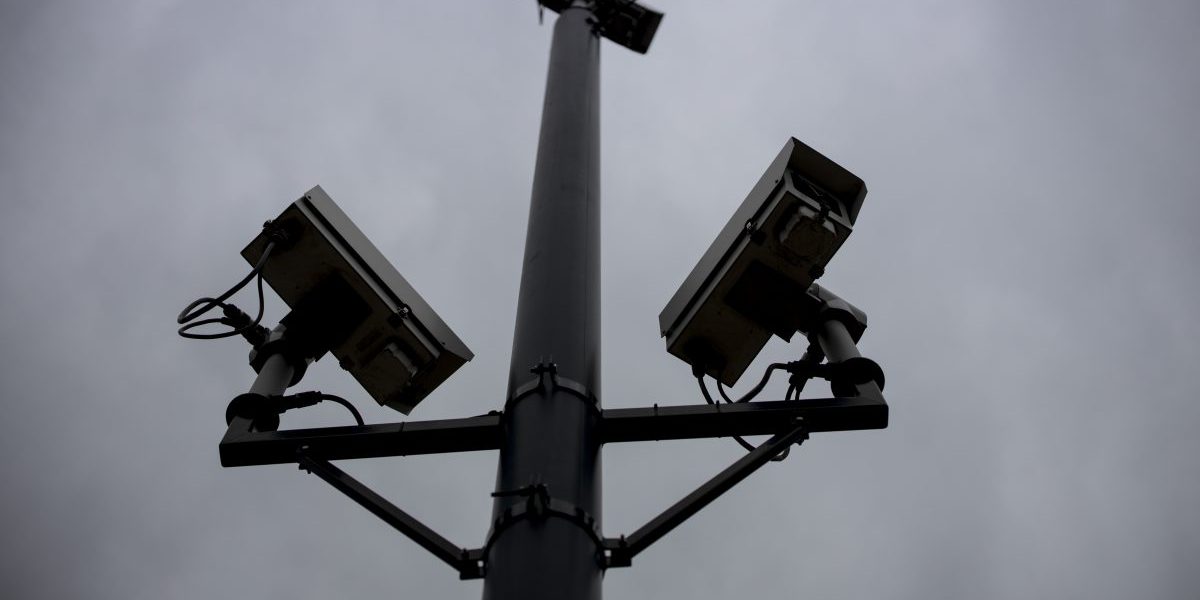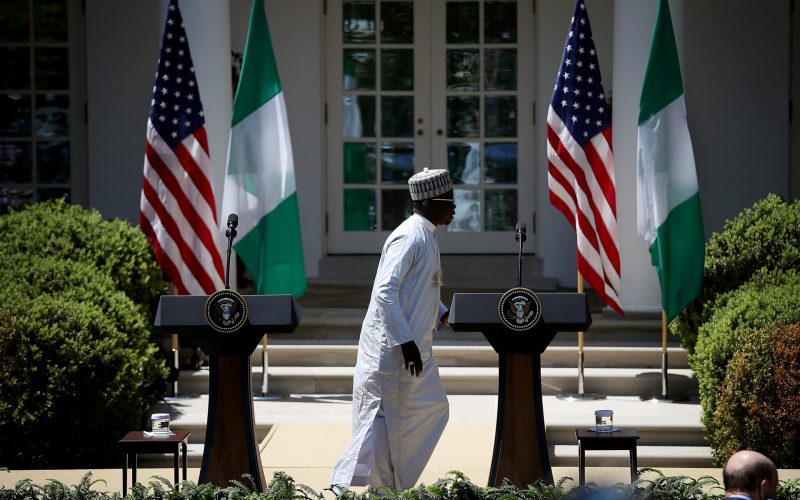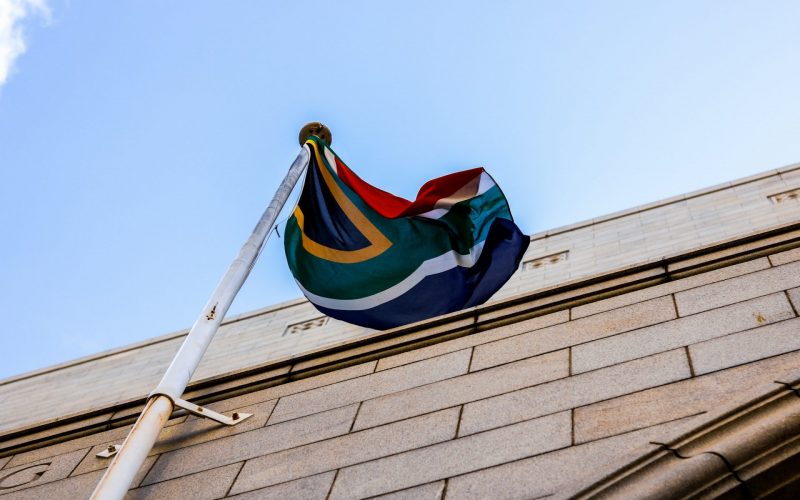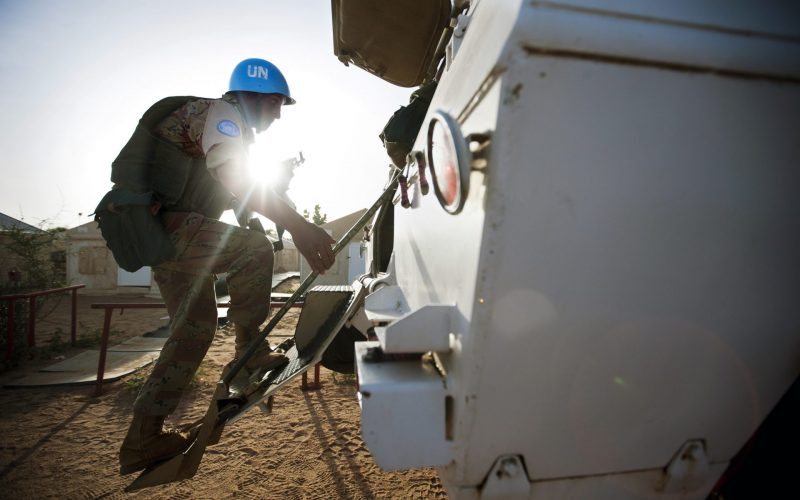Recommendations
- Mass surveillance threatens civil rights and liberties, and has no place in safe or smart city initiatives. South Africa should take the lead in 21st century privacy and implement hard bans on state and corporate CCTV surveillance, Big Data policing and surveillance centres.
- The South African government should rein in police abuses by working directly with communities on safety and security.
- Bottom-up initiatives should push for low- or no-tech solutions to raise the standard of living. Possible exceptions for limited surveillance in public spaces should be determined by residents. Computer technology will not solve the deep structural problems of poverty, inequality and unemployment.
Executive summary
South African cities are increasingly turning to technology-aided surveillance to police public spaces. Conceived of as ‘safe city’ projects, they are linking cameras to form wide area networks that increasingly use artificial intelligence (AI) to index, sort and interpret data pooled into centralised surveillance-based ‘nerve centres’. These initiatives are being launched without full public transparency. This policy briefing provides previously undisclosed details about safe city projects in Johannesburg, and focuses on the implications for South African democracy of implementing such systems of mass surveillance. While these technologies are deployed in the name of fighting crime, they reinforce some of the very structural inequities that underlie the national crime problem.
Introduction
Just over 25 years into formal democracy, South Africa ranks among the most unequal societies in the world.1Dennis Webster, “Why South Africa Is the World’s Most Unequal Society”, Mail & Guardian, November 11, 2019, https://mg.co.za/article/2019-11-19-why-sa-is-the-worlds-most-unequal-society.Economic inequality has slightly reduced between races, but has increased overall.2Roger Southall, “The Black Middle Class and Democracy in South Africa”, The Journal of Modern African Studies 52, no. 4 (2014): 647–670; Hein Marais, South Africa Pushed to the Limit: The Political Economy of Change (Claremont: UCT Press, 2011), 134–139.The neoliberal policy framework adopted by the government has reinforced the racial disparities formed over centuries of colonial and apartheid rule.3Marais, South Africa Pushed; Tshepo Madlingozi, “Social Justice in a Time of Neo-Apartheid: Critiquing the Anti-Black Economy of Recognition, Incorporation and Distribution”, Stellenbosch Law Review 28 (2017), https://repository.up.ac.za/bitstream/handle/2263/64971/Madlingozi_Social_2017.pdf.1In a context of extreme poverty, unemployment and inequality, it is no surprise that crime rates are also among the highest in the world.4See World Population Review, “Crime Rate by Country 2020”, https://worldpopulationreview.com/countries/crime-rate-by-country
Major metropolitan areas have initiated ‘safe city’ projects to manage and police public spaces with sophisticated new technologies. The cities of Johannesburg and Cape Town are leading the way. In Johannesburg, the City operates the Integrated Intelligence Operations Centre (IIOC), a ‘surveillance nerve centre’ that integrates ‘all municipal data onto a single platform’.5City of Johannesburg, “IIOC Provides for Intelligent Policing Using CCTV Cameras”, 2018, https://joburg.org.za/media_/Pages/Media/Newsroom/IIOC-provides-for-intelligent-policing-using-CCTV-cameras.aspx.In Cape Town, the Transport Management Centre is a ‘nerve centre’ that integrates public safety, traffic and safety and security management. Its ultimate goal is to produce analytics that organise policing around prediction and real-time awareness for boots on the ground.6CrimeWatch, “Cape Town’s Nerve Centre”, eNCA, March 13, 2019, https://www.youtube.com/watch?v=yaQTqbFPAE4.
In this policy briefing, the focus falls on Johannesburg’s Safe City project. It explores its ethical dimensions and suggests a way forward to build an alternative safe city free of police harassment and surveillance.
Safe cities
Safe cities are a new trend that often form part of a wider effort to transform urban areas into ‘smart cities’. The roots of safe cities can be traced to the 1990s with the invention of computer-based statistics tools to fight crime in the US. In New York City, a project called CompStat (‘comparative statistics’) was developed to track crime and deploy officers in crime-ridden areas. The project inspired the first Real Time Crime Centers, whereby city authorities pool disparate sources of data into centralised police command-and-control centres.7Dean Esserman (co-creator of CompStat), interview by Michael Kwet, January 19, 2019. See also Michael Kwet and Paul Prinsloo, Teaching in Higher Education: Critical Perspectives 25, no. 4 (2020): 510–526, https://www.tandfonline.com/doi/abs/10.1080/13562517.2020.1734922.
As technology became more sophisticated, city administrators began integrating information from city departments and private sources of data (such as corporations) to assist with safety, security and law enforcement activities. In due time, these efforts became known as safe cities.
While safe cities focus on safety and policing, they often lay the basis for smart cities, as the rich array of information captured by surveillance data can be used for a wide variety of administrative tasks, from energy and waste removal to urban planning. In Johannesburg, policymakers are focused on first building a safe city architecture and then adding functionality to transform it into a smart city.
Building a safe city in Johannesburg
A recent paper by surveillance tech providers proposes that safe cities will advance along three tiers.8Accenture and Western Digital, “Seeing What Matters: A New Paradigm for Public Safety Powered by Responsible AI”, 2018, https://www.accenture.com/_acnmedia/pdf-94/accenture-value-data-seeing-what-matters.pdf. For context, see Michael Kwet, “The Rise of Smart Camera Networks, and Why We Should Ban Them”, The Intercept, January 27, 2020, https://theintercept.com/ 2020/01/27/surveillance-cctv-smart-camera-networks.Tier 1 is the present state of affairs, where closed-circuit television (CCTV) networks are installed to investigate crime after the fact. In Tier 2, municipalities transform into smart cities that pool camera feeds from disparate sources (such as schools and hospitals) at government and law enforcement agencies to inform centralised, AI-enabled analytics systems. In Tier 3, a full spectrum of data is fed into city centres, including voluntarily contributed camera feeds from private residents, data from social media and police databases, and ‘dark data’. The latter is defined as ‘information collected, processed, and stored during regular business activity, but not meaningfully utilized or analyzed’.9Accenture and Western Digital, “Seeing What Matters,” 4.Armed with Big Data gleaned from a variety of sensors and databases, police aim to assess ‘anomalies in real time and interrupt a crime before it is committed’.10Accenture and Western Digital, “Seeing What Matters,” 3
The City of Johannesburg – along with other major cities in South Africa – appears to be heading along this path. The first phase began around 2003, when 16 CCTV cameras were installed by Business Against Crime (BAC) as an initiative to secure a collection of unnamed banks. Crime and service delivery problems were running businesses out of the city, and the project aimed to re-attract investment, encourage big companies to stay in the city and make the central business district safe for residents and workers.11Richard Witte (Acting Director, IIOC), Nazira Cachilia (Project Manager, Johannesburg Safety Programme) and Taariq Kagee (Office of the MMC: Public Safety), interview by Michael Kwet, September 26, 2019.
The second phase began around 2008 when the City of Johannesburg, under the Public Safety division of the Johannesburg Metropolitan Police Department, took over the project from the BAC. It installed a 216-camera network at a cost of around ZAR12Currency code for the South African rand.51 million ($6.6 million).13City of Johannesburg, “Service with Pride: 2017/18 Integrated Development Plan Review” (Office of the Executive Mayor, Johannesburg, 2018), 139–141, https://www.joburg.org.za/documents_/Documents/Other/Integrated%20Development%20Plan/IDP%20Annexure/201718+Integrated+Development+ Plan+Review.pdf; Simnikiwe Mzekandaba, “Joburg Banks on Nerve Centre to Enhance Service Delivery”, ITWeb, August 6, 2018, https://www.itweb.co.za/content/O2rQGqAplDzMd1eaDuring this phase, a blueprint was created for a city-owned command-andcontrol centre – the IIOC. It would apply video analytics for ‘Intelligent Law Enforcement’; pool cameras, sensors and data flows across City departments; and use data to predict trends in the city, including crime.14City of Johannesburg, End of Term Report: 2011–2016 (Johannesburg: Office of the City Manager, 2017), https://web.archive.org/web/20170505172659/https://joburg.org.za/images/stories/2016/june/pdf/End%20of%20Term%20Report.pdf; City of Johannesburg, Draft Integrated Development Plan: 2018/19 Review, https://www.joburg.org.za/documents_/Documents/Intergrated%20Development%20Plan/idp%20documents/IDP%20for%20Council%20(2).pdf.The third phase began in 2015 when the Mayoral Committee approved the blueprint and began building the IIOC, at a cost of ZAR 71 million ($5.8 million).15Witte, interview; City of Johannesburg, Draft Integrated Development Plan
The IIOC is outfitted with 512 cameras on several separate CCTV networks. At present, most CCTVs are ‘dumb’ cameras that feed into the centre, where software adds basic video analytics. The IIOC has facial recognition capabilities, but the feature is in a pilot testing phase configured for strategic spots where the cameras are positioned to capture a clear shot of a face. There are also a handful of Automatic Number Plate Recognition cameras deployed by the City. The Safe City project is the forerunner of a smart city in Johannesburg.16Witte, interview.
Public–private partnerships and the global context
South Africa is a neoliberal society with severe constraints on the state budget. In order to create a safe city, cities must procure most of their technology from the private sector and form public–private partnerships for surveillance rollouts. In 2011, the City of Johannesburg announced a partnership with IBM to conduct a ‘five-year public safety strategy in line with the city’s 2040 vision of a smart city’.17City of Johannesburg, “Johannesburg, South Africa: 2011 Challenge”, https://web.archive.org/web/20170501222229/https:/www.smartercitieschallenge.org/cities/johannesburg-south-africa; IBM, “IBM’s Smart Cities Challenge: Johannesburg, South Africa – Summary Report” (IBM, Armonk, 2012), https://web.archive.org/web/20170425162424/https://smartercitieschallenge.org/assets/cities/johannesburg-south-africa/documets/johannesburg-south-africa-summary-2011.pdf.IBM was to offer ‘integrated intelligence’ for ‘crime prevention and investigation – including increased police presence and visibility, better coordination amongst agencies, and a data centre with predictive analytics’, as well as ‘intelligence sharing’.18IBM, “IBM’s Smart Cities Challenge”.The partnership concluded with little publicity or transparency.
At present, the IIOC hosts several disparate CCTV networks powered by a mix of Western and Chinese corporations.19Witte, interview. The basic cameras are China-based Hikvision “dumb” cameras; the Video Management Systems are provided by Genetec (Canada) and Huawei (China); Automatic Number Plate Recognition cameras are provided by Geutebrück (Germany) and Huawei; facial recognition is provided by Huawei; and IBM (US) supplies Network Video Recorder infrastructure for some of the cameras. See also Parliamentary Monitoring Group, “ShotSpotter Technology: Beyond Wireless Briefing”, May 9, 2018, https://pmg.org.za/committee-meeting/26334.City officials have visited Brazil (where IBM implemented a smart and safe cities project) and China to learn about such projects, and they study developments in countries such as the US and the UK.20Richard Witte (Acting Director, IIOC), interview by Michael Kwet, October 8, 2019.
South African institutions also supply technology to the centre. The IIOC is piloting the Council for Scientific and Industrial Research’s (CSIR) Cmore, a ‘Jason Bourne’ style system that can integrate various sources of surveillance data – from cameras and sensors to geospatial data and weather activity – and acts as a communications platform for Cmore users.21Michael Kwet, “Cmore: South Africa’s New Smart Policing Surveillance Engine”, Counterpunch, January 27, 2017, https://www.counterpunch.org/2017/01/27/cmore-south-africas-new-smart-policing-surveillance-engine.Cmore’s current functionality at the IIOC provides a communications platform for police officers. The City is considering whether or not to continue using this system – adding capabilities such as the integration of disparate camera networks will be an extra cost – or to shop for a commercial product that offers similar functionality.22Taariq Kagee (Deputy Director: Compliance Services & Stakeholder Management), interview by Michael Kwet, May 14, 2020.
Domestic surveillance firms are also potential City partners. Vumacam is presently building its own private network of CCTV networks, with the aim of blanketing all of Johannesburg with cameras and building new networks across the country. In the process, it plans to extend its network to over 100 000 cameras.23See, among others, Michael Kwet, “Smart CCTV Networks Are Driving an AI-Powered Apartheid in South Africa”, VICE News (Motherboard), November 22, 2019, https://www.vice.com/en_us/article/pa7nek/smart-cctv-networks-are-driving-an-ai-poweredapartheid-in-south-africa; Michael Kwet, “Apartheid in the Shadows: the USA, IBM and South Africa’s Digital Police State”, Counterpunch, May 3, 2017, https://www.counterpunch.org/2017/05/03/apartheid-in-the-shadows-the-usa-ibm-and-south-africasdigital-police-state.The City is considering integrating CCTV streams from corporations (eg, Vumacam) and other sources (eg, the University of Johannesburg and the University of the Witwatersrand), as well as from drones (eg, provided by banks such Absa), into the IIOC. These streams could then be viewed in real time and, potentially, stored by the IIOC for evidence in criminal investigations.24Kagee, interview, May 14, 2020.
These developments follow comments made in 2017 by former Johannesburg MMC for finance, Rabelani Dagada, who said that the centre would tap into cameras provided by the private sector and provincial government. These ‘plug-in surveillance networks’ are spreading across the world because city governments cannot afford to supply and manage tens or hundreds of thousands of cameras and Internet of Things sensors by themselves.25Kwet, “The Rise of Smart Camera Networks”.
Impacts on human rights and democracy
Transparency
While some city departments were accessible and transparent – especially officials working at the IIOC – others did not respond to numerous requests for an interview, such as the Metropolitan Trading Company, which supplies broadband in Johannesburg. That said, the City is now changing its policy 26Kagee, interview, May 14, 2020. He did not specify the new procedures.and may make it more difficult for researchers, journalists and members of the public to access officials for information.
Some private sector actors were available for interviews, but many others failed to respond to inquiries. Vumacam CEO Ricky Croock responded to inquiries about its CCTV surveillance network, but refused to go on the record. Meanwhile, the outcome of the IBM smart city project is shrouded in mystery. While IBM agreed to an interview, it would not disclose fine details about the project. The City was ‘facing litigation’ over a ZAR 60 million ($7.5 million) loan it provided to the City in 2009.27City of Johannesburg, Annual Report: 2016/2017 (Johannesburg: City of Johannesburg, 2018), https://www.joburg.org.za/documents_/Pages/Key%20Documents/Annual%20Report/201617%20Annual%20Report/Annual%20Report%20For%20Council.pdf.Huawei did not respond to email inquiries. The CSIR refused to discuss the Cmore surveillance system in conjunction with safety, security and policing, despite having run a pilot project in partnership with the South African Police Service.28Herman le Roux (CSIR), personal email exchange, 2019–2020 (Le Roux works on the Cmore project).Other difficulties encountered trying to obtain information are too numerous to list.
The right to privacy
The technology used for safe city surveillance undermines civil rights and liberties. Studies show that people tend to conform to the status quo when they know they are being watched. Freedom of expression withers under the watchful eye of authorities, as people fear reprisal for their speech, association and assembly. Moreover, throughout history, surveillance has been marshalled against oppressed and marginalised communities, a practice that continues into the present.29Michael Kwet, “Digital Colonialism: South Africa’s Education Transformation in the Shadow of Silicon Valley” (PhD diss., Rhodes University, 2019), 102–107, https://papers.ssrn.com/sol3/papers.cfm?abstract_id=3496049.
The South African constitution guarantees the right to privacy. However, like many Western democracies, South Africa permits the use of surveillance in public where there is ‘no reasonable expectation to privacy’.30See Kwet, “Smart CCTV Networks Are Driving.” “For decades, courts have allowed the use of cameras in public spaces, but these cameras produced low-resolution images covering a single location. Today, CCTV tech aligns a powerful network of high-resolution cameras that cover wide areas and assess people via video analytics. The capacity to observe individuals and groups is far more advanced and threatening, especially when considering the ability to pool multiple data sources for Big Data analytics and the sophistication of complex systems driven by software platforms. For example, with AI it is becoming possible to recognise faces, index the movement of individuals and groups, detect characteristics such as skin tone and clothing, evaluate behaviours such as running and fighting and even flag ‘unusual’ behaviour. In South Africa, Vumacam’s smart camera network has already generated controversy around issues of racism and civil liberties.31See Kwet, “Smart CCTV Networks Are Driving.”
South Africa’s Protection of Personal Information Act (POPIA) is meant to handle issues of privacy in the 21st century context. While major parts of it are just coming into effect, POPIA is already being interpreted to allow mass CCTV surveillance in public spaces, and is loaded with weak provisions and exemptions.32See Michael Kwet, “People’s Technology for People’s Power: A Guide to Digital Self-Defense and Empowerment”, Right2Know, 2020, 52, 63–67, https://www.r2k.org.za/wp-content/uploads/Peoples-Tech_August-2020.pdf.In a preliminary assessment, leading POPIA regulator Collen Weapond said that ‘there is no reasonable expectation of privacy in public places’.33Kwet, “Smart CCTV Networks Are Driving”.If the surveillance protected the ‘safety and security’ of the data subject, he added, then it was permissible under POPIA because it was in ‘the legitimate interest’ of those being observed. Weapond also held that always-on camera surveillance was permissible if it used ‘intelligent surveillance technology’ to reduce video processing and recording.34Collen Weapond, interview by Michael Kwet, May 5, 2018; Collen Weapond, “CCTV Surveillance Project Opinion”, 2019, sent to Michael Kwet, November 6, 2019.
This suggests South Africa needs new laws and new litigation to set limits on the development of an all-seeing state.
Opening a Pandora’s box
At present, the safe and smart cities movement envisions many thousands of cameras covering city spaces. Cameras are highly coveted for these projects because visual information is the richest form of surveillance data that can be obtained from sensors. As cameras go up for safety and policing, they can double up to perform analytics for city administrators. Expanding usage for ‘efficiency purposes’ will undoubtedly come to justify putting the public under constant video surveillance. Once the infrastructure is in place, any legal limits on how the cameras are used can be lifted in response to a crisis or a change in city government. City governments are opening a Pandora’s box they cannot control indefinitely.
In interviews, City of Johannesburg officials said it envisioned the use of facial recognition to police undocumented persons, the use of video analytics to police service delivery protests, the use of predictive analytics and a convergence of safe city technology with smart city initiatives.
At the same time, officials admitted that they had no studies to show that their video surveillance was curbing crime.35Nazira Cachilia, interview with Michael Kwet, December 23, 2019; Kagee, interview, May 14, 2020.In May 2019 the press reported anecdotes and data – provided by the City – alleging that the use of cameras was reducing crime.36See, for example, “Joburg Clamps Down on Crime with 1,500 New Police Officers”, Business Tech, September 26, 2019, https://businesstech.co.za/news/lifestyle/343151/joburg-clamps-down-on-crime-with-1500-new-police-officers.However, there are presently no independent peer-reviewed studies to confirm this.
City officials may argue that cities must be turned into surveillance states in order to reduce crime.37Muhammad Hussain, “Will Plugging into ‘Advanced Monitoring’ Allow SA to Reclaim the Streets?”, City Press, May 5, 2018, https://web.archive.org/web/20180526123759/https://city-press.news24.com/News/will-plugging-into-advanced-monitoring-allowsa-to-reclaim-the-streets-20180525; Daneel Knoetze, “City of Cape Town Plan to Acquire Drones”, GroundUp, September 11, 2014, https://www.groundup.org.za/article/city-cape-town-plan-acquire-drones_2226.Yet even if some additional crimes were caught or prevented, ultimately, there would be no shortcuts to fixing the situation. In order to truly curb violent crime, burglaries and robberies, the country must reduce inequality, poverty and unemployment.
Recommendations and conclusion
Current laws on surveillance were created in a pre-digital era in which the ability to monitor, record and make sense of surveillance data was not robust.38Kwet, “The Rise of Smart Camera Networks.”Today, data from sensors such as cameras and microphones, smartphones and social media – as well as external records such as census data, criminal records, computer-aided dispatch and record management systems – can be pooled into intelligence centres (a.k.a. ‘nerve centres’), recorded and analysed by algorithms. This threatens to revive the spirit of the apartheid-era surveillance state.39Michael Kwet, “Surveillance in South Africa: From Skin Branding to Digital Colonialism”, in Jeffrey Vagle and Michael Kwet, The Cambridge Handbook of Race and Surveillance, forthcoming 2021, https://ssrn.com/abstract=3677168.
To combat this trend, the legal system must put strong restrictions on public surveillance in place. The following steps, if taken together, would secure privacy against the growing surveillance creep:
- abolish nerve centres for city surveillance;
- ban video analytics in publicly accessible spaces (perhaps with exceptions for rare cases, such as bodies on train tracks or safety in dangerous workplace scenarios);
- ban plug-in surveillance networks and restrict the scope of networked CCTVs beyond the premise of a single site;
- limit the density of camera and other sensor coverage in public;
- place all information and policy positions of the City in the public domain and publicise them widely;
Instead of digital surveillance, safe city projects should implement solutions that comport with human rights and address structural problems. Solutions could be low-tech, such as installing street lights so that public spaces are well-lit at night. Fixing the problems related to human policing is paramount. South African police kill civilians at three times the rate of US police,40World Population Review, “Police Killings by Country 2020”, https://worldpopulationreview.com/country-rankings/police-killings-bycountry.and they must be held accountable for abuse.41Daneel Knoetze, “Viewfinder: IPID’s Cover-Up of Police Brutality in SA”, Daily Maverick, October 7, 2019, https://www.dailymaverick.co.za/article/2019-10-07-viewfinder-ipids-cover-up-of-police-brutality-in-sa.While questions about the structure of policing are beyond the scope of this policy briefing, policymakers must work with the public to build trust and find ways to help protect the people without resorting to abuse and the erosion of civil rights and liberties.
More than anything else, South Africa needs to fix its political, social and economic problems by addressing corporate exploitation, residential segregation, corruption and neocolonialism, which combine to perpetuate poverty, inequality and unemployment. There is no shortage of progressive thinking around policies designed to transform inequality.42For examples, see Mark Heywood, “The Vital Need for Economic Democracy in South Africa”, Daily Maverick, September 15, 2020, https://www.dailymaverick.co.za/article/2020-09-15-the-vital-need-for-economic-democracy-in-south-africa.Turning society into a police state will only make problems worse.
Acknowledgement
SAIIA gratefully acknowledges the support of SIDA for this publication.








